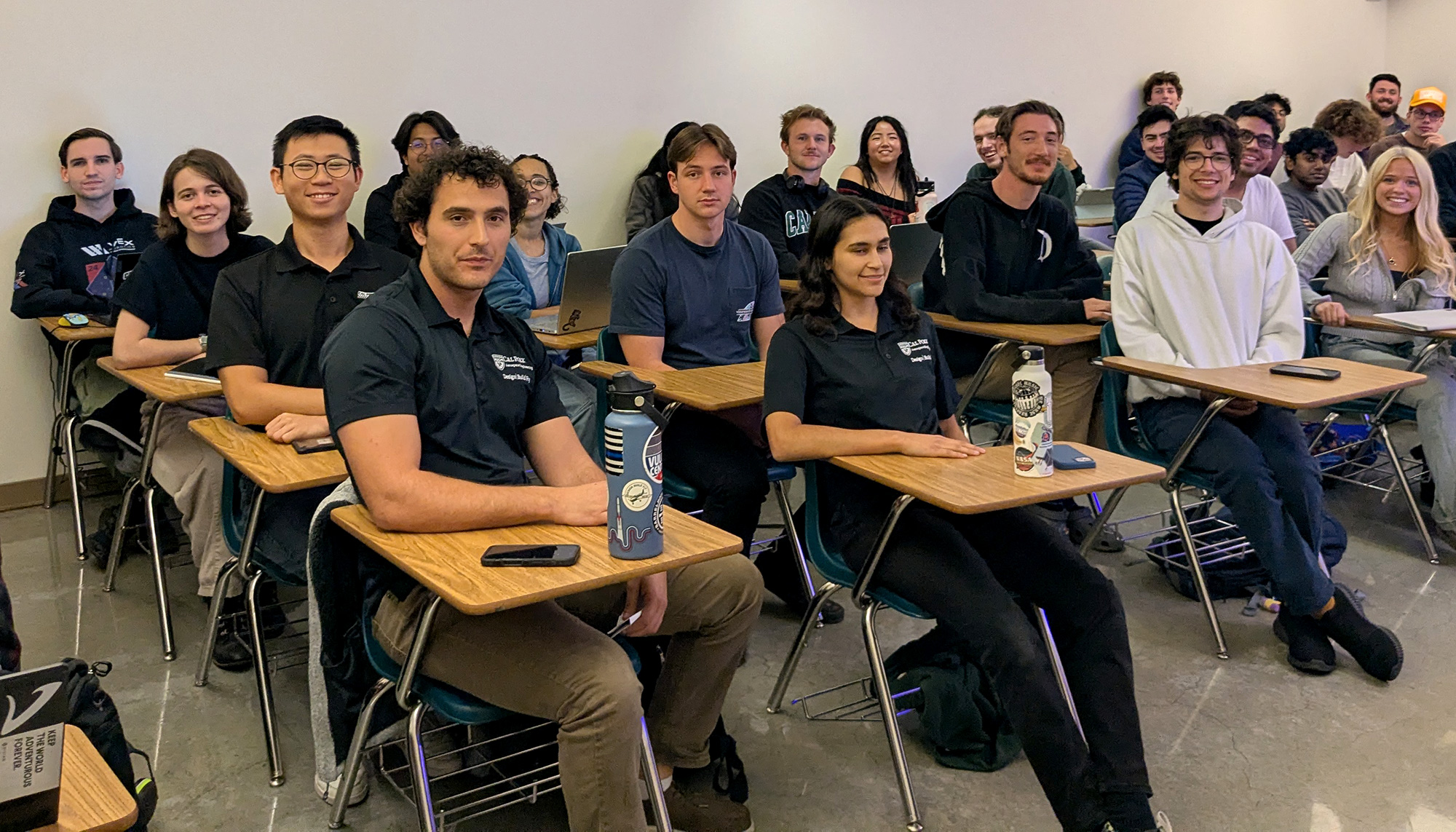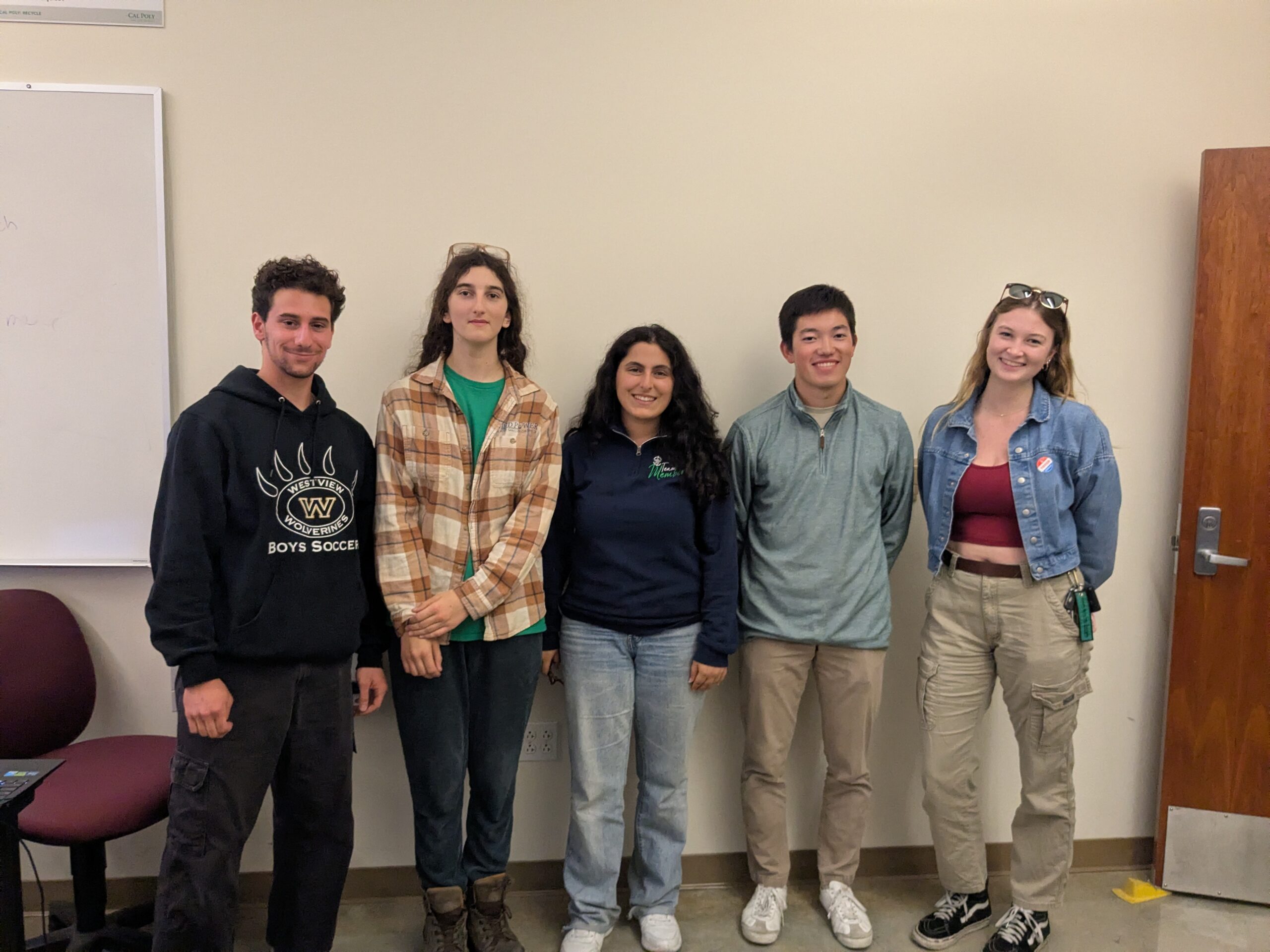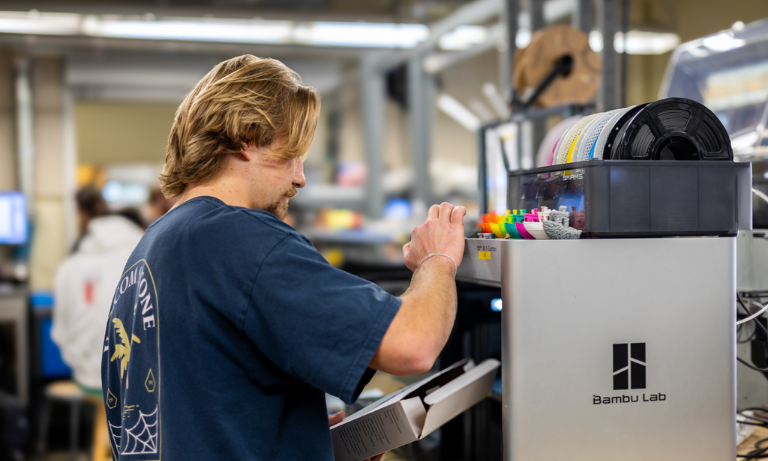Each quarter, a small group of mechanical engineering students steps into a role that blends leadership, stewardship and vision. They are the voices behind MEDAC, the Mechanical Engineering Discretionary-Fund Allocation Committee, and their work quietly shapes the hands-on learning that defines Cal Poly’s mechanical engineering program.
Founded in 2003 through a student-led referendum, the committee began as a way for students to direct funding toward their department’s priorities. What started as MESFAC, the Mechanical Engineering Student Fee Allocation Committee, evolved into MEDAC after the COVID-19 pandemic, shifting to discretionary funds supported by donors. Today, the committee continues its original promise of letting students guide how resources are spent to strengthen mechanical engineering at Cal Poly.
A Tradition of Student Leadership
Mechanical engineering and former faculty adviser Professor John Chen has witnessed MEDAC’s evolution over two decades. He recalled when the program started with students directly managing hundreds of thousands of dollars raised through fees before it transitioned to donor-supported funds.
“When I was the adviser, I didn’t tell them how to do anything,” Chen said. “That’s the whole purpose: They figure it out. They run it.”
That student-driven structure endures. In fact, the responsibility entrusted to the students is substantial. As current faculty adviser Professor Hans Mayer noted, “It’s not insignificant amounts of money that they’re dealing with, and the stakes are fairly high.” Today, the committee oversees about $50,000 to $70,000 each year, meeting several times per quarter to review proposals and vote on allocations. Their work funds tools, lab improvements and projects that enhance hands-on learning across the department.
That trust creates a vital funding pathway for clubs and projects that might not otherwise have access to necessary resources. Mayer summarizes this arrangement as a “wonderful opportunity” that requires the student committee to navigate the complex decision-making process and run the organization independently. This hands-off structure ensures the process is authentically student-driven, preparing MEDAC members with real-world experience in leadership, accountability and institutional change.
Student Voices at the Center
When MEDAC returned from its pandemic hiatus, few students knew it existed. The new committee set out to rebuild awareness, update bylaws and reintroduce the program to the department. Fourth-year student Ella Perry, now chair, said the group’s goal was straightforward: giving students a voice in how their department’s resources are used.
“It’s a chance for us to make a real impact,” she said. “We’re helping students turn their ideas into projects that strengthen mechanical engineering for everyone.”
For students on the committee, MEDAC is as much about leadership as it is about engineering. Its impact is visible across campus, from lab upgrades to competition projects. Recent funding has helped teams design assistive technology for people with disabilities and develop specialized sensors for Formula SAE cars. Committee secretary Thomas Pierce said watching those ideas take shape is the most rewarding part of the job — a chance to remove financial barriers that stand between students and innovation.
The members act as both stewards and advocates, deciding which ideas to fund while encouraging peers to bring new ones forward. Each funding cycle brings creativity and tough choices, from lab upgrades to project materials. The team focuses on long-term impact, supporting equipment, tools and resources that can serve students for years instead of one-time expenses.
Second-year student Odelia Shofet joined to help expand that reach. “I like being behind the scenes,” she said. “I like figuring out how things are funded and making sure people have opportunities they might not have had. Being part of a committee where we can help others pursue their passions and study what they love is really cool.”

Collaboration and Decision-Making
The committee operates on a structured schedule, hosting three funding rounds per year in fall, winter and spring, to align with Cal Poly’s project-based calendar. Proposals arrive from clubs, senior project teams and research groups, each seeking funds for materials and equipment. Members review presentations, ask questions and deliberate before awarding funds. The process is open to the public, and students are invited to watch or share input at every meeting.
Former member Hobbs Hegedus said that transparency can make decisions challenging but rewarding.
“The hardest part is saying no,” he said. “You get all these really great ideas, but we can’t fund everything. We want to focus on projects that help the most students.”
Over time, MEDAC’s framework has become a model of peer-led collaboration. The meetings, often lasting hours, feel like miniature grant panels, giving students a crash course in leadership, communication and resource management. Students weigh technical merit, cost efficiency and impact, learning to evaluate ideas through an engineer’s lens while staying grounded in fairness and empathy.
Looking Ahead
With proposals increasing each year, the committee continues to look for ways to stretch its resources. More funding, students say, would mean fewer tough cuts — and more opportunities for hands-on learning.
To help expand student-led funding opportunities and sustain the next wave of projects, consider donating to the Mechanical Engineering Department discretionary fund.
By Scotty Hallmark


